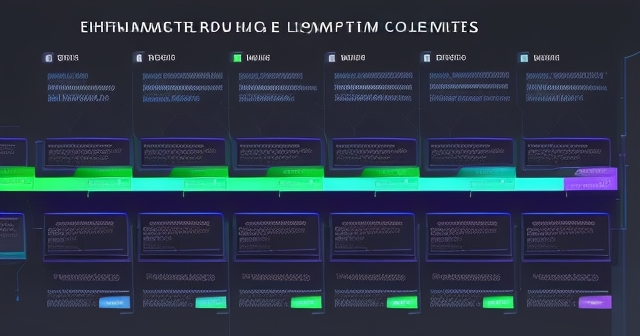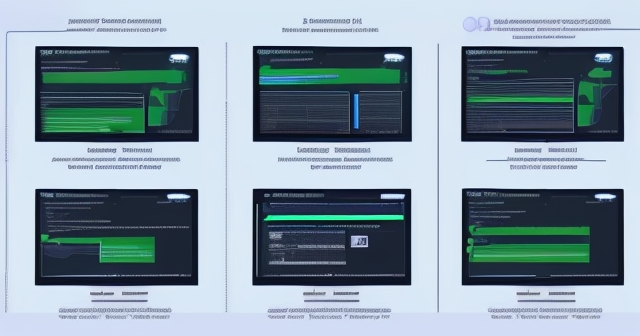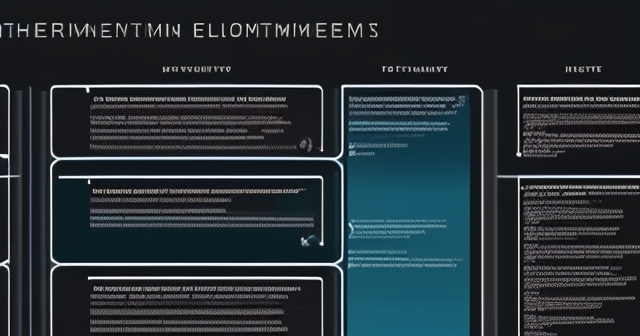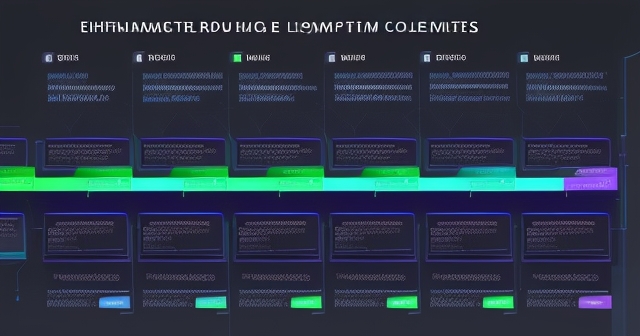“`html
Setting the Stage: Navigating Ethereum’s Progress This Week
Welcome back! As investors and traders, understanding the core dynamics of the assets we engage with is paramount. This week in the world of Ethereum (ETH) has been particularly dynamic, filled with critical developments on the protocol layer, significant shifts in market sentiment influenced by regulatory news, and persistent challenges within the broader ecosystem. It’s a complex landscape, constantly evolving, much like trying to navigate a ship through both calm waters and sudden squalls. Our goal together today is to dissect these events, understand their implications, and see how they fit into the larger picture of Ethereum’s journey towards becoming a truly global, decentralized platform. We’ll explore the nitty-gritty of upcoming upgrades, examine the market’s reaction to external factors, and confront the inherent risks that come with innovation in the blockchain space.
Think of Ethereum as a massive, collaborative construction project. There are teams constantly working on the core infrastructure, engineers testing new components, architects planning future expansions, and observers analyzing the structural integrity and market value of the ‘building’ itself. This week, we’ve seen significant progress on the engineering and architectural fronts, alongside crucial updates from the regulatory bodies overseeing the construction site’s access points. We’ve also seen reminders that, despite its strength, vulnerabilities exist, requiring constant vigilance and reinforced security measures. So, let’s roll up our sleeves and dive into the details. What were the key milestones and challenges that defined this week for Ethereum? How do these pieces fit together, and what do they tell us about the path ahead?

Here are some of the key points from this week:
- Ongoing discussions about upcoming upgrades, particularly Pectra.
- Market sentiment influenced by regulatory news regarding ETH ETFs.
- Persistent challenges related to centralization risks and security incidents.
The Heartbeat of Development: Pectra, PeerDAS, and Future Upgrades
At the core of Ethereum’s evolution is its continuous cycle of upgrades. These aren’t just minor tweaks; they are fundamental changes designed to improve scalability, security, efficiency, and functionality. This week, the conversations among Ethereum’s core developers have heavily centered around the next major network upgrade: Pectra. Pectra, as you may know, is an exciting combination of the ‘Prague’ and ‘Electra’ upgrades, focusing on both the execution layer and the consensus layer post-The Merge and the subsequent Shanghai and Deneb upgrades. The ambitious target timeline being discussed places Pectra tentatively in Q1 2025. While that might sound distant, the planning and development are happening right now, demonstrating the long-term vision inherent in the protocol’s governance.

Why combine two upgrades? The idea is to bundle several significant improvements into one coordinated effort, making the deployment process more streamlined, albeit complex. This approach allows for dependencies between execution and consensus layer changes to be managed more effectively. As we delve into the specifics, you’ll see that Pectra aims to bring about some fundamental shifts in how Ethereum operates, particularly concerning validator mechanics and potentially the handling of data. Keeping track of these proposed changes, often discussed through Ethereum Improvement Proposals (EIPs), Research Implementation Proposals (RIPs), and Ethereum Request for Comments (ERCs), gives us a powerful insight into the network’s trajectory and future capabilities. It’s like looking at the blueprint for the next major phase of the construction project.
Deep Dive into Pectra: Scope, Timelines, and Devnet Progress
The Pectra upgrade is a beast, encompassing a range of EIPs aimed at optimizing various aspects of the network. One of the most encouraging updates this week was the nearing readiness of pectra-devnet-1. Devnets, or development networks, are crucial testing grounds where these complex changes are implemented and rigorously tested in simulated environments before ever touching the mainnet. The fact that the first devnet is just 1-2 weeks away from launch signifies tangible progress. This isn’t just theoretical discussion; it’s code being written, tested, and refined. Consensus layer client teams, responsible for software like Lighthouse, Prysm, Teku, and Nimbus, and execution layer client teams, working on clients like Geth, Besu, Erigon, and Nethermind, are coordinating closely to ensure compatibility and stability on this devnet.

What exactly is being planned for Pectra? While the final scope is still under discussion, several key EIPs are strong candidates. The conversations highlight a focus on improving the efficiency and experience for validators, the participants who stake ETH to secure the network and process transactions. There’s also discussion around potential changes related to how data, particularly ‘blobs’ introduced in the Deneb upgrade for Layer 2 scaling, are managed. The goal is always to enhance the network’s capacity and reduce friction for users and developers alike. Think of the devnet as a full-scale model where engineers can identify potential stress points or compatibility issues before building the actual structure. This testing phase is absolutely critical for maintaining the stability of a multi-billion dollar network.
PeerDAS (EIP-7594): Bolstering Data Availability on Ethereum
A significant component being considered for Pectra, and a major focus of development this week, is EIP-7594, also known as PeerDAS. This EIP is a continuation of the work started with the Deneb upgrade’s introduction of proto-danksharding and blobs. PeerDAS stands for “Peer Data Availability Sampling.” Its core purpose is to make the process of verifying the availability of data blobs more efficient and decentralized. Currently, full nodes download entire blobs to verify their availability. PeerDAS aims to shift this towards a sampling mechanism, significantly reducing the data load on individual nodes. This is crucial for scaling Ethereum’s ability to support Layer 2 rollups, which post large amounts of transaction data onto the mainnet via blobs.
Imagine Layer 2s as busy side streets off the main highway (Ethereum). They process lots of local traffic (transactions) and then post a summary report (blob data) back to the main highway’s ledger. PeerDAS is like improving the main highway’s ability to quickly check that all the summary reports are indeed available and haven’t been tampered with, without needing every single police officer to read every single report cover-to-cover. This week saw ongoing development efforts for a dedicated PeerDAS devnet, building upon the Deneb infrastructure. There were also technical discussions about potentially uncoupling the blob count from the execution layer, offering more flexibility in how data is handled. Progress on PeerDAS is vital for realizing Ethereum’s long-term vision of being a scalable settlement layer for the decentralized web, making it a high-priority item in the development roadmap.
Beyond Pectra: Exploring Other Key EIPs and Protocol Enhancements
While Pectra and PeerDAS dominated the core development discussion, work continues on a multitude of other improvements across the Ethereum stack. One notable advancement is the progress on SSZ (EIP-7688), which proposes a new serialization standard for Ethereum. SSZ aims to provide a more efficient and standardized way to represent data structures, crucial for cross-client compatibility and future protocol changes. A devnet specifically for SSZ is also in the works, highlighting its importance. Think of serialization like packaging data; SSZ is designed to be a more efficient and universally understood packaging method for Ethereum’s different software clients.
Other proposals gaining traction include EIP-7732, which received support from Vitalik Buterin this week. This EIP aims to make block validation faster and simplify tasks for validators. This is part of the ongoing effort to optimize the network post-Proof-of-Stake. There’s also a new meta EIP (EIP-7723) defining the stages for including EIPs in network upgrades, adding structure to the governance process. On the Layer 2 front, a new RIP (RIP-7724) is proposing increased gas costs for certain hash functions used in zk rollups, reflecting ongoing adjustments to network economics based on real-world usage. Resurrected and new ERCs (like ERC-838, ERC-7720, ERC-7721, ERC-7722) continue to emerge, covering diverse areas from ABI specifications to new token functionalities like deferred transfers and lockable extensions. These smaller, yet numerous, proposals show the breadth of innovation happening across the ecosystem, tackling everything from core infrastructure efficiency to new token capabilities.
| EIP Number | Description | Status |
|---|---|---|
| EIP-7594 | Peer Data Availability Sampling | In Development |
| EIP-7688 | New serialization standard | In Development |
| EIP-7732 | Fast block validation | Proposed |
Ethereum in the Market Spotlight: Price Trends and ETF Anticipation
Shifting our focus from the technical trenches to the financial markets, this week saw ETH’s price exhibiting volatility within a relatively contained range. We observed ETH trading between approximately $3,367 and $3,713, currently hovering around the $3,480 mark as of the latest reports, showing a slight downturn (around 2% on a specific day) despite positive news flow. Technical analysis points to resistance levels, notably near the 50-week Simple Moving Average (SMA) around $2,850, while support appears to be holding around $2,530, where the 100-week and 200-week SMAs converge. These technical indicators provide levels that traders watch closely for potential trend reversals or confirmations.
Market movements aren’t just dictated by technicals, of course. External factors play a massive role. This week’s price action was influenced by a mix of broader uncertain US market conditions and, interestingly, outflows from spot Bitcoin (BTC) ETFs. Sometimes, what happens in the Bitcoin market has a spillover effect on other cryptocurrencies, including Ethereum, given their correlation. We also saw a significant amount of futures liquidations in the past 24 hours, totaling over $105 million across the market. Such liquidation events can add to price volatility as forced selling or buying occurs. So, while the development news was positive, the market’s immediate reaction was muted, reminding us that crypto prices are a function of many interconnected variables, including macroeconomic sentiment and dynamics within other major crypto assets.
Regulatory Horizon: SEC Signals and the ETH ETF Outlook
Perhaps the most significant market-moving news for Ethereum this week came from the regulatory front in the United States. SEC Chair Gary Gensler made comments indicating that the approval of spot ETH Exchange Traded Funds (ETFs) S-1 registration statements is likely to occur over the US summer. This follows the SEC’s initial approval of 19b-4 filings for spot ETH ETFs in May. While the 19b-4 approval was a major step, the S-1 approval is necessary for the ETFs to actually begin trading.
Gensler’s comments provide much-needed clarity on the potential timeline. This isn’t just speculation; it’s a signal directly from the top US securities regulator. Why is this such a big deal? Spot ETH ETFs are expected to open the doors for traditional financial institutions and retail investors to gain exposure to Ethereum’s price movements through regulated investment vehicles that are more familiar than direct crypto ownership. Analysts, including those from firms like Galaxy Digital and K33 Research, have begun projecting potential inflows and even suggesting that Ethereum is poised to outperform Bitcoin in the period following the ETH ETF launch. This optimism stems partly from anticipated new demand for ETH via the ETFs and partly from potential headwinds facing Bitcoin, such as upcoming repayments related to the defunct Mt. Gox exchange which could put selling pressure on BTC. The potential launch of spot ETH ETFs is widely seen as a catalyst that could significantly alter market dynamics for Ethereum, increasing its legitimacy and accessibility within the traditional financial system.

Navigating Network Risks: Centralization, Diversity, and Security Exploits
While progress is being made on development and regulatory fronts, it’s crucial to address the inherent risks and challenges that Ethereum faces. One persistent concern is **centralization**, particularly within the **staking** landscape and **client software** usage. As of recent reports, **Lido**, a liquid staking protocol, maintains a significant dominance, holding around 28.75% of staked ETH. While below the critical 33.3% threshold that could theoretically allow a single entity to disrupt network finality, it remains close enough to warrant concern. A highly concentrated staking pool introduces a single point of failure risk.
Similarly, **client diversity** is an ongoing challenge. On the execution layer, Geth still holds a majority share (over 50%), and on the consensus layer, Prysm also maintains a dominant position (over 33.3%). If a critical bug were discovered in a client with over 33.3% dominance, it could potentially cause a loss of finality on the network, severely impacting its stability and trustworthiness. Efforts to encourage the use of minority clients are vital for network health. Beyond internal structure, the ecosystem built on Ethereum faces external threats. This week saw significant **security exploits**, notably a major hack on **UwU Lend**, a DeFi protocol, resulting in a $23 million loss via oracle manipulation, followed by another $3.7 million re-exploit. This exploit directly led to the liquidation of large positions held by the founder of Curve, Michael Egorov, highlighting the interconnected risks within the DeFi ecosystem. We also saw a smart wallet exploit on **Loopring** via a compromised 2FA service and even a phishing scam targeting Lido stakers promoted through a hacked Ethereum Foundation email. These incidents are stark reminders that the frontier of decentralized finance is also a frontier for sophisticated attacks, and security must remain the absolute highest priority for users, developers, and the ecosystem as a whole.
Bolstering Security for Global Scale: The Trillion Dollar Initiative
Recognizing the escalating scale of value stored and transacted on Ethereum, and the corresponding increase in potential targets and sophisticated attacks, the **Ethereum Foundation (EF)** has launched a crucial new effort: the “**Trillion Dollar Security Initiative**.” This initiative signals a strategic commitment to scaling security measures far beyond what is typically required in traditional financial systems, aiming to safeguard an ecosystem that could eventually host trillions of dollars in value and support global adoption. It’s an acknowledgment that as Ethereum grows from a nascent technology into a foundational layer for the digital economy, its security infrastructure must evolve proportionally.
The initiative is being led by key members of the EF, including Fredrik Svantes and Josh Stark, and advised by prominent security experts in the field like Samczsun, Mehdi Zerouali, and Zach Obront. Their focus is on identifying and implementing security improvements at the protocol level and fostering a culture of enhanced security awareness and tooling across the ecosystem. This isn’t just about patching bugs; it’s about building resilience into the network’s DNA and supporting the development of more secure smart contracts and applications. Think of it as upgrading the entire security system of the ‘digital city’ that is Ethereum, making it robust enough to handle the traffic and value of a global metropolis. This proactive approach to security is essential for building trust and enabling mainstream adoption.
The Expanding Ecosystem: Layer 2 Developments and DApp Dynamics
Ethereum’s scalability strategy heavily relies on **Layer 2 (L2)** solutions, which process transactions off the mainnet before settling them back on Layer 1. This week saw continued progress in the L2 ecosystem. Notably, **OP Stack** based networks, like the OP Mainnet itself, are moving forward with the implementation of **fault proofs**, with OP Mainnet reaching **Stage 1** in its decentralization roadmap. Fault proofs allow anyone to challenge the validity of transactions rolled up by the L2 operator, providing a crucial layer of security and trust minimized operation.
The **ZKsync** ecosystem was also in the spotlight with discussions surrounding its recent **airdrop**, though the team had to issue denials regarding claims of “insider minting” related to attending events. This highlights the complexities and community scrutiny surrounding token distribution events in the crypto space. Other L2-specific updates include the ongoing deployment of RIP7712 (secp256r1 precompile) on various L2s and **Based preconfs** going live on a devnet, pushing forward optimistic rollup designs. On the **DApp (Decentralized Application)** front, reports indicated a significant surge in **Ethereum DApp volume** during Q2, increasing by 83%. However, it’s important to note that this metric could be skewed by the volume of a single application, reminding us to look beyond headline numbers and understand the underlying drivers. Acquisition news also surfaced, with Uniswap Labs acquiring Crypto: The Game, signaling consolidation and expansion within the DeFi and NFT crossover space. These developments across L2s and DApps demonstrate the vibrant and rapidly evolving nature of the ecosystem built on top of Ethereum.

Concluding Thoughts: Balancing Innovation, Market Forces, and Network Health
This week has painted a comprehensive picture of Ethereum’s multifaceted reality. We’ve seen robust progress on fundamental protocol upgrades like Pectra and PeerDAS, laying the groundwork for improved scalability and efficiency in 2025. The promising signals from SEC Chair Gary Gensler regarding spot ETH ETF approvals over the US summer represent a potentially massive catalyst for market integration and institutional adoption, with analysts predicting positive price performance relative to Bitcoin post-launch. These forward-looking developments are undeniably exciting and speak to the long-term potential of the network.
However, alongside this progress, we are reminded that significant challenges persist. The critical issues of centralization risk in staking and client diversity require ongoing attention and proactive measures to ensure the network’s long-term resilience and decentralization. Furthermore, the recent spate of high-profile security exploits on applications built on Ethereum underscores the inherent risks in pioneering decentralized technologies and the absolute necessity of continuous security innovation and vigilance. The Ethereum Foundation’s “Trillion Dollar Security Initiative” is a necessary and strategic response to this reality, aiming to build a security framework capable of protecting the immense value the network is poised to command.
Ultimately, Ethereum’s journey is one of balancing ambitious technical innovation with the realities of market dynamics, regulatory landscapes, and the ever-present need for robust security. As investors and participants in this ecosystem, understanding these different facets – from the intricate details of an EIP to the broader implications of an ETF approval or a security breach – is crucial for navigating this complex space effectively. The path forward for Ethereum is not without its hurdles, but the activity this week demonstrates a community and development effort actively working to address them, pushing the platform closer to realizing its vision of a decentralized global computer.
week ethereum ethFAQ
Q:What is the significance of the Pectra upgrade?
A:The Pectra upgrade aims to enhance Ethereum’s scalability, security, and efficiency by combining significant improvements into a single coordinated effort.
Q:How does regulatory news affect Ethereum’s market prices?
A:Regulatory news, especially regarding ETF approvals, can influence market sentiment and lead to price volatility in Ethereum and other cryptocurrencies.
Q:What measures are being taken to enhance Ethereum’s security?
A:The Ethereum Foundation has launched the “Trillion Dollar Security Initiative” to bolster security measures and prepare the network for global scalability.
“`

留言